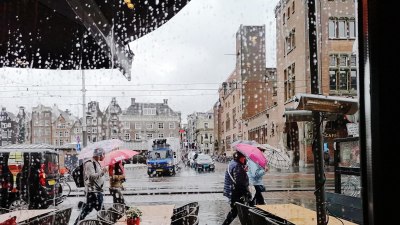Electricity Tips for Travelers Heading to Singapore
Essential electricity tips for travelers visiting Singapore to ensure a smooth experience.

Image by tawatchai07 on Freepik
Traveling to Singapore can be an exciting adventure filled with new sights, sounds, and experiences. However, before you embark on your journey, it's crucial to understand the local electrical standards to ensure that your electronic devices and gadgets function properly during your stay. In this article, we'll provide you with essential electricity tips that every traveler heading to Singapore should know.
Understanding Electrical Standards in Singapore
In Singapore, the voltage used for household electrical outlets is 230V with a frequency of 50Hz. This is important information for travelers coming from regions that use different voltage standards. For example, countries like the United States and Canada typically use a voltage of 120V. If you're traveling from such countries, you'll need to be aware of the potential risks of plugging in your devices directly into Singapore's electrical outlets.
Electrical Outlets and Plugs
Singapore uses the Type G electrical outlet, which has three rectangular prongs arranged in a triangular pattern. It's essential to check whether your devices are compatible with this plug type. If your devices have different plug types (such as Type A or Type B plugs common in North America), you will need a plug adapter to ensure that your gadgets can connect to Singapore's electrical outlets without any hassle.
Voltage Compatibility
Aside from using the correct plug, you'll also need to consider whether your devices can handle the voltage in Singapore. Most modern electronics such as smartphones, laptops, and tablets are dual voltage, meaning they can operate safely on both 110-120V and 220-240V systems. However, it's still a good idea to check the specifications of your devices. Look for a label on the charger or device itself that states the input voltage range. If it reads “100-240V,” you're in the clear. If it only states 110-120V, you may need a voltage converter to avoid damaging your device.
Using a Universal Travel Adapter
If you’re traveling from a country with a different plug type, investing in a universal travel adapter can be incredibly beneficial. A universal adapter allows you to plug in devices from various regions into Singapore's outlets without needing multiple adapters for each device. Look for adapters that support the Type G plug configuration to simplify your experience.
Bringing a Power Bank
Long days of exploring Singapore's vibrant streets mean your mobile devices are likely to run out of battery faster than usual. To avoid the hassle of finding a charging station or returning to your hotel, consider bringing a power bank. These portable chargers can keep your devices charged while you're on the go. Ensure your power bank is compatible with local voltage and plug types.
Checking for Hotel Amenities
Before booking your accommodation, check whether the hotel provides charging facilities or any type of power outlets suitable for your needs. Most hotels in Singapore cater to international guests and will offer Type G outlets and voltage that is suitable for most devices. However, if you're staying in a more budget-friendly option or renting an apartment, you might want to confirm these details to avoid any surprises.
Staying Safe While Charging Devices
When using local electrical outlets, safety should be your priority. Make sure to avoid overloading the power outlets, mainly when using multiple devices simultaneously. Overloading can lead to short-circuiting or fuse blowing, which can be dangerous. If you notice any unusual signs like flickering lights or burning smells while charging, unplug your devices immediately and consult the hotel staff or a local electrician.
Using Public Charging Stations
If you're out and about in Singapore, you may come across public charging stations in shopping malls, parks, or tourist locations. While these stations provide convenience, it’s advisable to remain cautious and safeguard your devices. Public charging ports can be a target for hackers trying to access your data. Always use your charging cable and avoid using the USB ports in public charging stations. Consider investing in a portable power bank for added security when exploring.
Emergency Charging Solutions
How about those times when your devices run low, but you don’t have immediate access to an outlet? In such cases, look for cafes, restaurants, or libraries that offer charging facilities. Many establishments encourage customers to stay connected while enjoying their offerings, so don’t hesitate to ask if they have a charging outlet available. It's a great way to revive your devices while enjoying a cup of coffee!
Travel Insurance and Electronics Coverage
Lastly, while it's essential to prepare for electricity and charging needs, you should also consider travel insurance that covers electronic devices. Accidental damages, loss, or theft can occur while traveling, and having appropriate insurance can provide peace of mind. Check whether your policy covers electronics, and if not, consider purchasing an additional plan specific to your gadgets.
Being prepared with knowledge about electricity standards and practices in Singapore is crucial for a smooth travel experience. From understanding the local plug types to ensuring voltage compatibility, following these tips will help you stay connected and avoid any inconveniences related to electrical issues during your stay. Safe travels!











